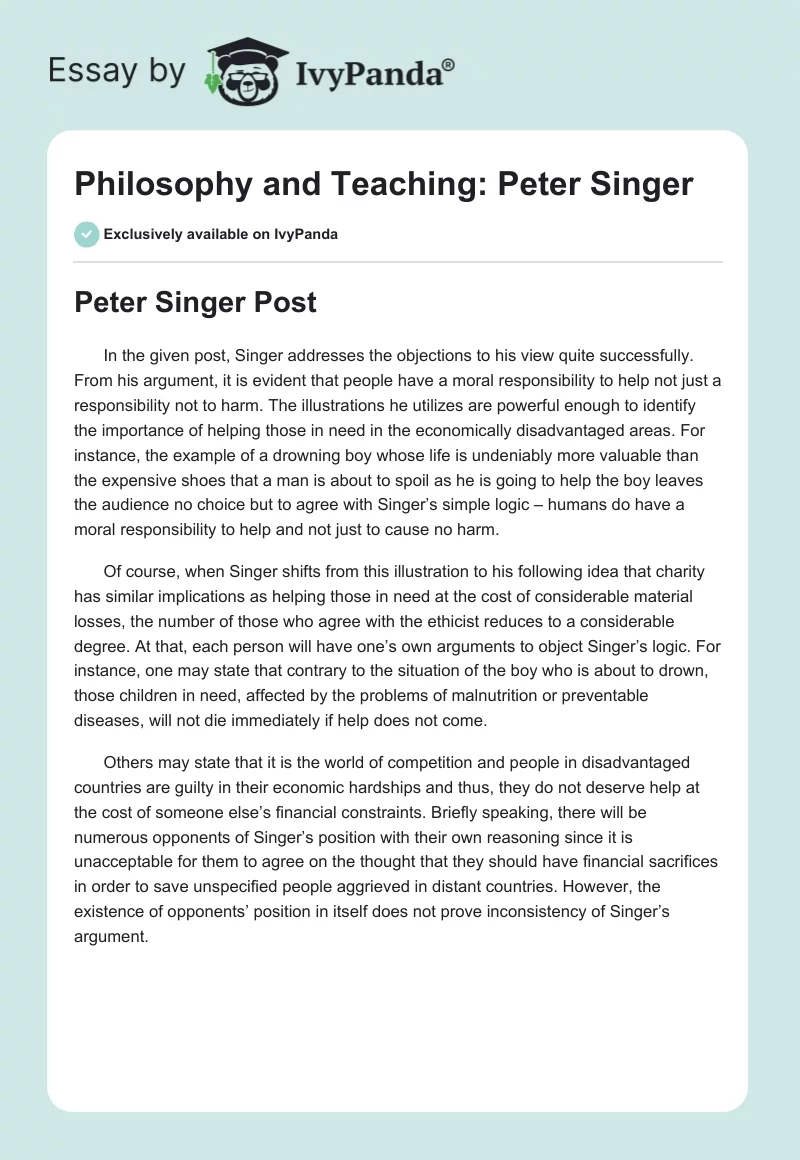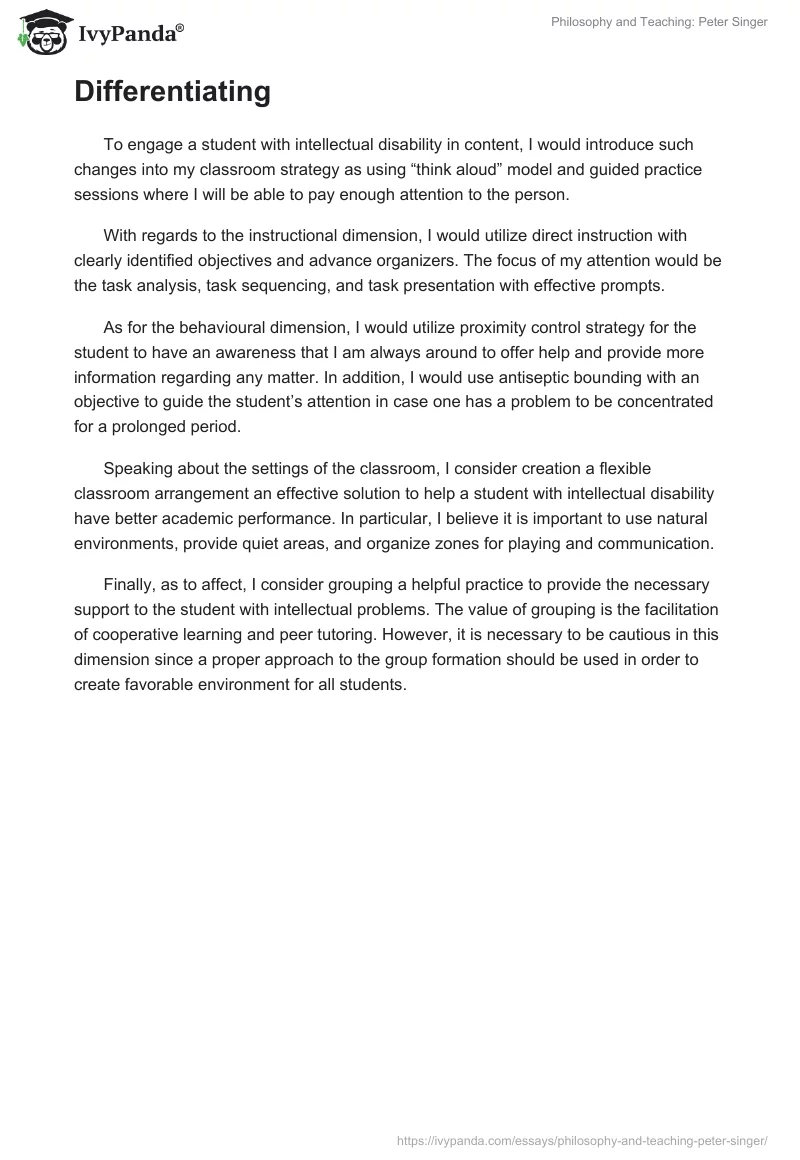Peter Singer Post
In the given post, Singer addresses the objections to his view quite successfully. From his argument, it is evident that people have a moral responsibility to help not just a responsibility not to harm. The illustrations he utilizes are powerful enough to identify the importance of helping those in need in the economically disadvantaged areas. For instance, the example of a drowning boy whose life is undeniably more valuable than the expensive shoes that a man is about to spoil as he is going to help the boy leaves the audience no choice but to agree with Singer’s simple logic – humans do have a moral responsibility to help and not just to cause no harm.
Of course, when Singer shifts from this illustration to his following idea that charity has similar implications as helping those in need at the cost of considerable material losses, the number of those who agree with the ethicist reduces to a considerable degree. At that, each person will have one’s own arguments to object Singer’s logic. For instance, one may state that contrary to the situation of the boy who is about to drown, those children in need, affected by the problems of malnutrition or preventable diseases, will not die immediately if help does not come.
Others may state that it is the world of competition and people in disadvantaged countries are guilty in their economic hardships and thus, they do not deserve help at the cost of someone else’s financial constraints. Briefly speaking, there will be numerous opponents of Singer’s position with their own reasoning since it is unacceptable for them to agree on the thought that they should have financial sacrifices in order to save unspecified people aggrieved in distant countries. However, the existence of opponents’ position in itself does not prove inconsistency of Singer’s argument.
Differentiating
To engage a student with intellectual disability in content, I would introduce such changes into my classroom strategy as using “think aloud” model and guided practice sessions where I will be able to pay enough attention to the person.
With regards to the instructional dimension, I would utilize direct instruction with clearly identified objectives and advance organizers. The focus of my attention would be the task analysis, task sequencing, and task presentation with effective prompts.
As for the behavioural dimension, I would utilize proximity control strategy for the student to have an awareness that I am always around to offer help and provide more information regarding any matter. In addition, I would use antiseptic bounding with an objective to guide the student’s attention in case one has a problem to be concentrated for a prolonged period.
Speaking about the settings of the classroom, I consider creation a flexible classroom arrangement an effective solution to help a student with intellectual disability have better academic performance. In particular, I believe it is important to use natural environments, provide quiet areas, and organize zones for playing and communication.
Finally, as to affect, I consider grouping a helpful practice to provide the necessary support to the student with intellectual problems. The value of grouping is the facilitation of cooperative learning and peer tutoring. However, it is necessary to be cautious in this dimension since a proper approach to the group formation should be used in order to create favorable environment for all students.


